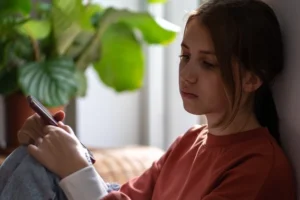Which children were most impacted by online harms
Vulnerable children
Children with offline vulnerabilities (e.g. SEND, experience of mental health problems) were more likely to experience an online harm compared to those without vulnerabilities. 78% of parents with vulnerable children reported their child experienced at least one online harm compared to 56% of parents with non-vulnerable children.
This group were also significantly more likely to be highly impacted by their experience of online harms compared to non-vulnerable children.
Amongst parents who say that their vulnerable child has experienced at least one online harm, more than 3 in 4 (76%) say it left their child in distress or upset. This is compared to 57% of parents with non-vulnerable children who feel a similar impact of the online harm.
Children spending the most time online
Children who spent more time online were more likely to report experiencing an online harm in the first place. Whilst the relationship between time spent online and the experience of an online harm can be contested, and is not necessarily causal, there is a clear pattern between spending more time online and being more likely to experience an online harm.

Figure 3: Average time spent online (hh:mm) by children who have experienced no online harms (N-210) and those that have experienced at least one online harm (N-790)
What children do online
When we asked children what they do online, we saw significant differences between those who had experienced harms with a high negative effect to those who haven’t experienced any online harm.

Figure 4: what children do on their digital devices. Those children who have not experienced any online harms (n-210), children who have experienced an online harm and been highly affected by it (n-220)
Children who say they have been highly affected by their experience of an online harm were more than three times more likely to be using chatrooms and forums (+243% difference) and creators (uploading videos they made themselves, +218%) compared to those children who haven’t experienced any online harm. Whether these activities were the root of the online harms experienced is not certain, but the most commonly occurring online harms – fake news, strangers contacting children and hate speech – could occur as result of these activities.









